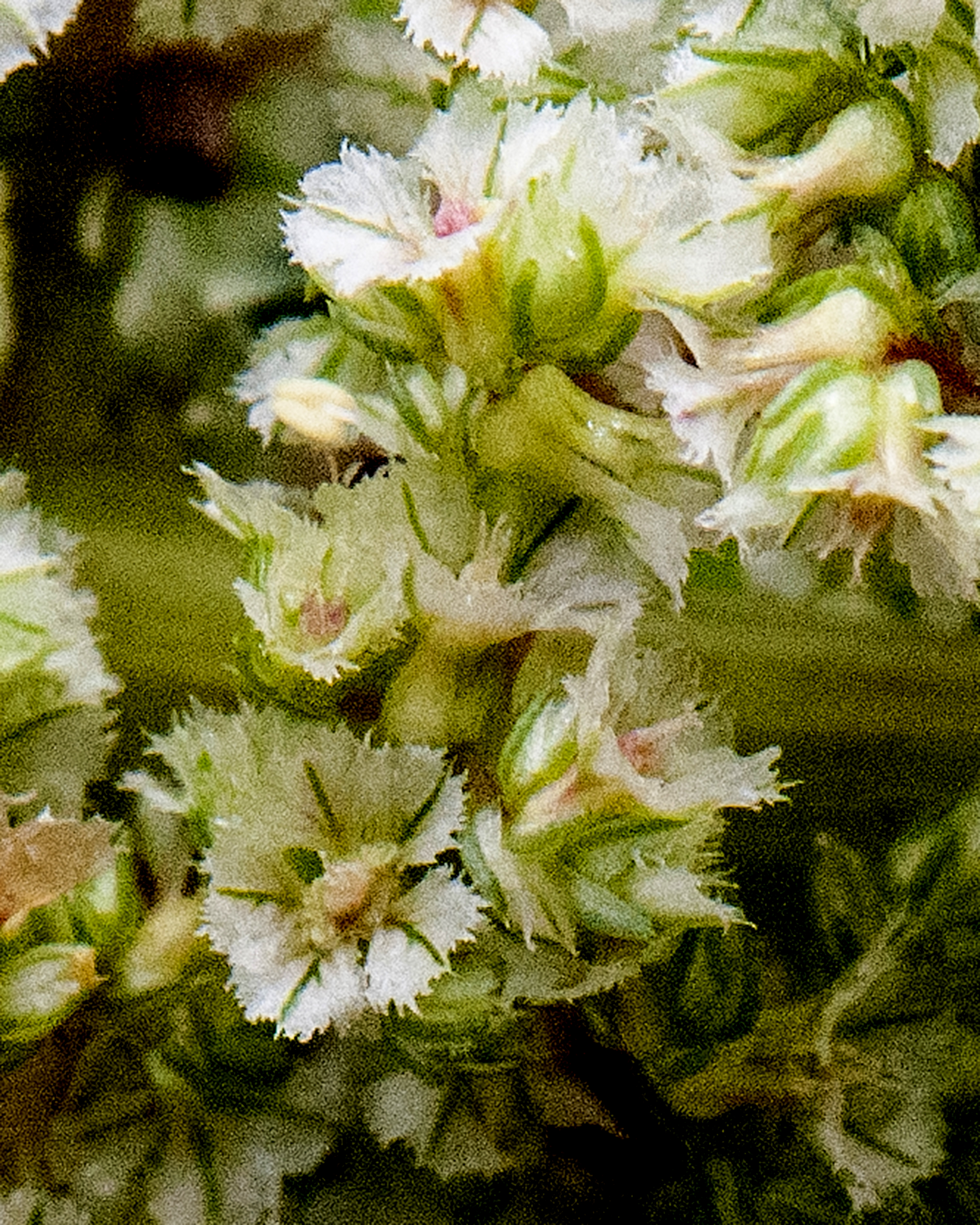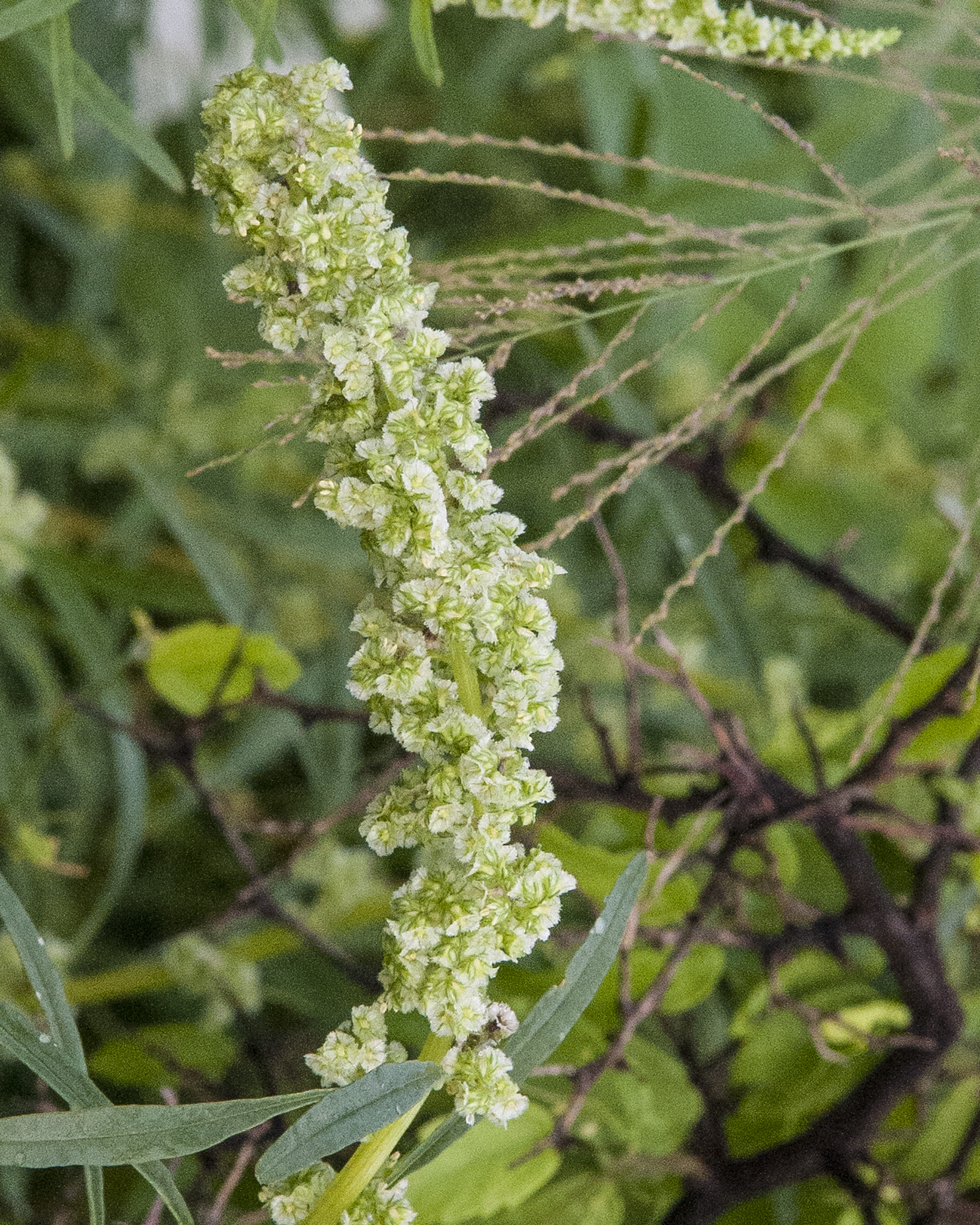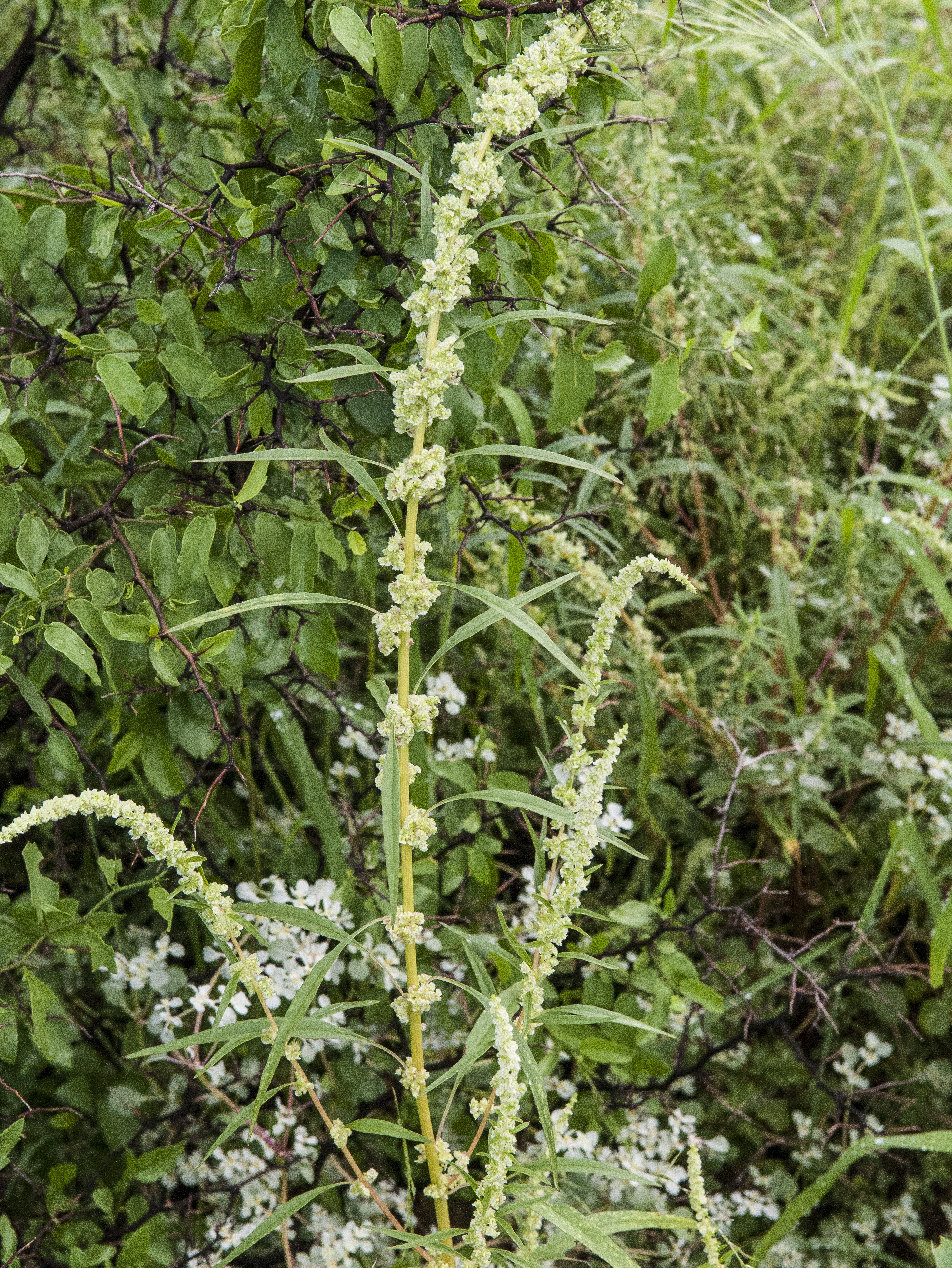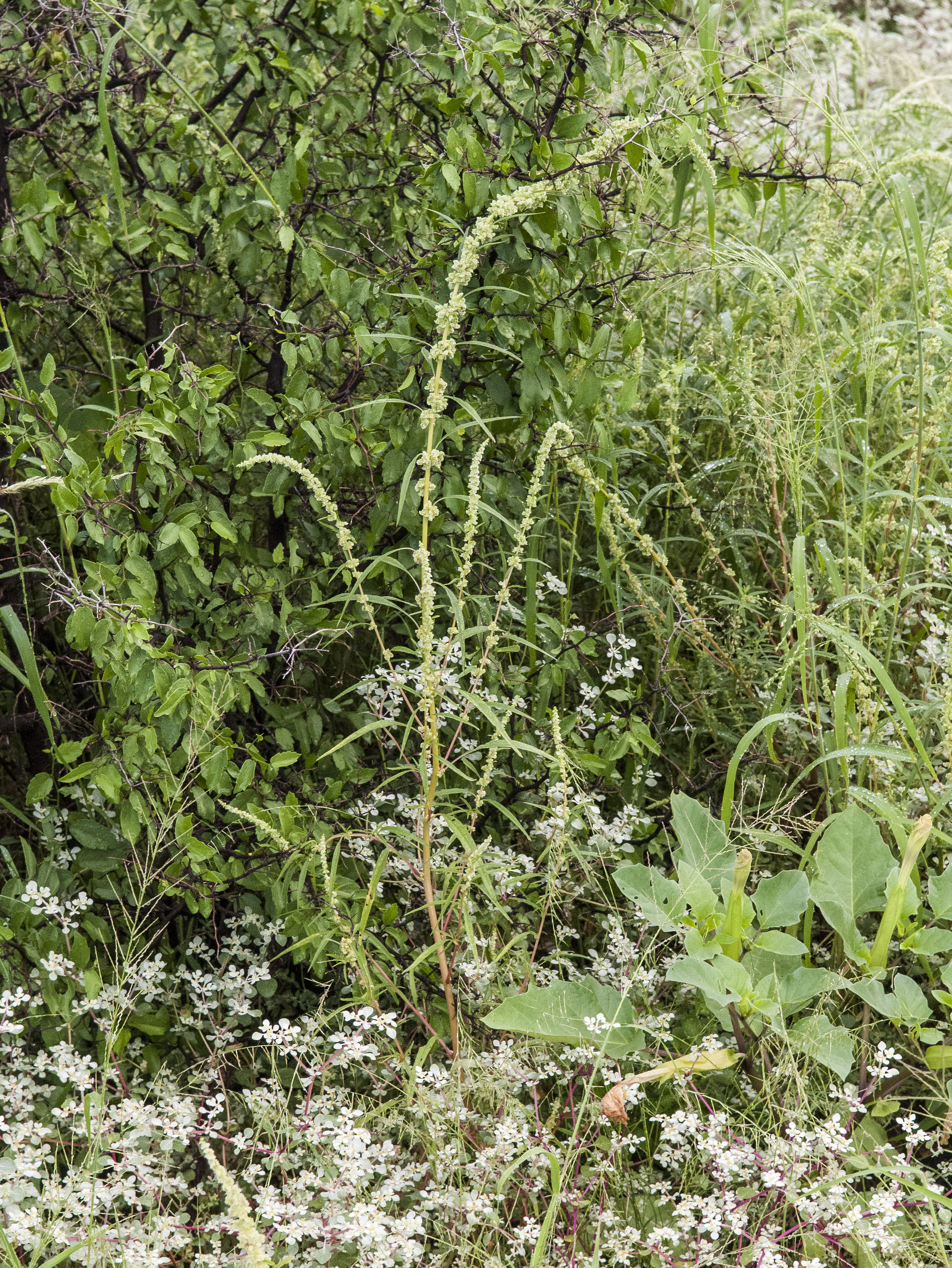Wildflowers of Southern Arizona
Fringed Amaranth.
Amaranthus fimbriatus.
Amaranth(Amaranthaceae) Family.
Duration: Annual. Nativity: Native. Lifeform: Forb/Herb. General: Glabrous annual herb, often with a reddish tinge; stems erect with lateral, ascending branches, usually branched from base; main and lateral stems sparingly branched or simple, 30-70 cm tall. Leaves: Alternate, short-petiolate, the petiole a quarter or half as long as blade; blade linear to narrowly lanceolate, 2-6 cm long by 0.1-0.5 cm wide, with a narrowly cuneate base, entire margins, and an acute to mucronulate apex. Flowers: Green and white or pink-tinged, in axiallary clusters scattered from base to apex of plant, and distally condensed in a terminal spike which is lax, unbranched, leafy below and almost leafless above, slender, and interrupted; bracts of pistillate flowers ovate to ovate-lanceolate, 1-2 mm, shorter than tepals; pistillate flowers with 5 tepals, the tepals reflexed, fan-shaped to broadly spatulate, clawed, equal or subequal, 1.5-3.5 mm, the margins fimbriate or denticulate; staminate flowers with 5 tepals, the tepal apices obtuse, and 3 stamens. Fruits: Subglobose to obovate utricles, 1-2 mm, shorter than tepals, rugose to nearly smooth, with circumscissile dehiscence; seeds black to dark reddish brown, lenticular, 0.8-1 mm diameter, shiny and smooth. Ecology: Found in sandy, gravelly slopes, washes, and disturbed habitats below 4,000 ft (1219 m); flowers August-November. Distribution: Ranges across the southwestern deserts from the Utah-Arizona border to Sinaloa. Notes: Similar to A. torreyi, which also has narrow leaves and axillary clusters of flowers grading into leafy terminal spikes. However, A. torreyi has shorter, often wider leaves, up to 2 cm wide, and pistillate tepals with entire margins. FNA recognizes two varieties of A. fimbriatus; var. denticulatus, with denticulate or crenate tepals, appears to have a more southern distribution in s AZ and MEX, while var. fimbriatus, with fimbriate tepals, is found farther north. Ethnobotany: The seeds were ground into a flour and used to make as mush, while the leaves can be eaten as greens or potherbs. Etymology: Amaranthus comes from the Greek amarantos, "unfading," referring to the long-lasting flowers, while fimbriatus means fringed, referring to the tepals.
Santa Catalina Mountains.
Sabino Canyon
Location: Beside Bear Canyon Trail just before Burro Wash 0.35 mile from Visitor Center
8/12/21
Notes: Lush area of many specimens after abundant monsoon rains
See SEINet Pictures and Description
See FireFly Forest Pictures and Description





